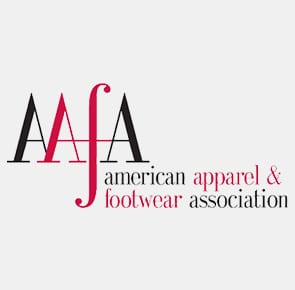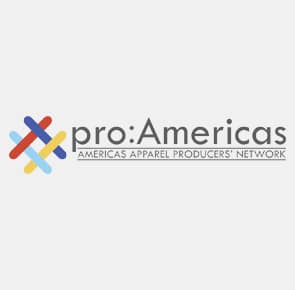Get Matched With Fashion Programs
Many people think that attending a school of art and design means that your "art education" will be focused on studio art or the fine arts. However, there are some other options, such as fashion studies and other programs in fashion, which are offered from a variety of design schools. The schools deemed the best fashion design schools are often the ones that are best known, or the ones found in fashion capitals such as Paris, where Paris Fashion Week takes place. However, those looking to become fashion students can also find programs in fashion from a variety of schools in the world, including throughout the United States.
A local school of art and design may offer you a BFA fashion design degree or another option that gives you everything you need to get into the business of fashion. These programs in fashion will offer a variety of courses covering every subject in fashion studies you need for your chosen specialty, including aspects of fashion you may never have considered, such as:
- Product Development
- Costume and Accessories Design
- Apparel Design and Merchandising
- High Fashion Merchandising
- Apparel and Textiles Design
- Fashion and Textile Technology
- Textile Design
- Fashion Media and Business Communication
- Designing for Long-Term Value
- And More
Once you earn your Associate in Applied Sciences (AAS) in Fashion or BFA fashion design degree, you’ll be ready to accept an entry-level position, working with textiles services, fashion, clothing, the construction of clothing, principles of clothing construction and selection, design of clothing patterns, fabric care, making alterations to ready-to-wear items, maintaining clothing, custom tailoring, textiles testing, apparel merchandising, and working in home furnishings. The career possibilities are wide.

Components of a Successful Career
Before you begin your education in fashion design, you need to know what this field is. Once you become a fashion designer or work in a different area of fashion design, you may end up concerning yourself with the latest fashion products and trends to enter the runway. Or you might focus on a green approach to fashion, apparel design, and textile design that will let you design fashion that will shake up the industry.
You may work in apparel design, textile design, communications and fashion media, photography, or fashion styling. Each one is its own career, though one career will affect another.
Compare Popular Online Fashion Programs
Overview of Education Options
What Does a Fashion Designer Do?

What is the Difference Between Design School and Fashion Schools?
In fashion design school, you’ll learn about everything related to fashion design. If you’re more interested in the business management side of the equation, you’ll be able to take those classes. If your interest is in buying, you’ll be able to tailor your class selection to that. Design school comprises art, fine art, graphic design, and game design.
Find Your Online Fashion Program
Typical Fashion Trade School Requirements
Be ready to request your official transcripts be sent to the schools of your choice. You’ll need to show proof that you graduated from high school. If you didn’t finish high school, you’ll have to take your GED exam, then show this proof of completion of your high school graduation.
Typical Fashion Certifications Needed
If you have opted for a certificate of achievement rather than an AAS degree, you’ll receive this certification once you completed every required course with a grade of C or higher.
Academic Standards for a Fashion Degree/Certification
In your fashion design program, you’ll have to take required general education courses, core courses, and electives related to your major. Once you get into the core classes for your major and before you graduate, you’ll have to show proof of your understanding terminology and the ability to design and execute your own clothing designs.
Exam/Experience Needed for a Fashion Degree/Certification
If you received your GED, you’ll have to send in either your GED, HISET, or TASC test score results via USPS. There is no entrance examination into an AAS or certificate fashion design program. Any design or fashion experience you have obtained from a high school fashion program will help you as you enter an AAS or certificate fashion design program.
Fashion Degree and Certification Options
A fashion degree from an accredited trade school or community college will provide you with several degree options. For instance, if you go to the School of Art and Design in the Fashion Institute of Technology, one of your degree options will be to spend one year in Florence, Italy, where you’ll immerse yourself in Italian fashion and design. There, you’ll take general education classes, such as a foreign language. You’ll also take required courses in your major. Your program will last one year, taking either your first two semesters or your last two semesters in Florence.
Fashion Trade School Fields of Study
Fashion Design: Fashion design is a natural outlet for artistic students who are also drawn to a fashion career. It’s important for you to know about the different design techniques and tools used in creating today’s newest fashions.
If you’re passionate about creating designs, forms, and patterns, fashion design blends all of these into one career. Be ready to use your creativity every day as you conceive of new ideas for fashion-wear.
Fashion Textiles: Everyone needs some kind of fabric in their lives. This could be upholstery for furniture, vehicles, or the clothing they wear. If you are interested in creating the artistic designs on textiles, then fashion textiles will be a natural career choice for you. You may have begun by creating paintings or drawings with designs that would be eye-catching on a blouse, dress, shirt, skirt, or even a pair of jeans.
Fashion Communication/ Promotion/ Journalism
Fashion only becomes known when someone speaks about it. From reviewing the newest fashions to attending fashion shows and reporting the newest runway looks, fashion journalists write articles and critique what they see. To be knowledgeable about the pieces you see, you need to know what went into their creation. This means you need a solid background in fashion design, textiles, fashion forecasting, visual merchandising, and fashion history.
A fashion journalist relies heavily on social media to communicate upcoming fashion trends. In this field, you’ll be asking many questions so you can create an article that puts current fashion into context.
Fashion Styling: As a fashion stylist, you’re the most concerned with visual display and merchandise styling. You’ll direct your work at both retail and wholesale, taking your knowledge of current fashions, color theory, visual display techniques, and fashion styling practices you will then determine your target market. Your main academic focus, other than your general education courses, will be working on textile and apparel fashion styles.
Fashion Photography: The world of fashion is highly visual. As a fashion photographer, you know this, so you seek out the most descriptive fashion shots that will help consumers to see what current fashions are really like.
You’ll be able to express your love of color and fashion. As a fashion photographer, you’ll be able to use your own judgment about the aesthetics of a shoot, outfit, accessories, and even the poses you direct models to take.
Fashion Marketing: As a fashion marketer, you need to know how the industry works. You’ll learn how to buy, sell, manage, promote sales, and create displays. With an associate degree your management role will be at an entry level. If you decide to advance through a four-year degree, your management responsibilities will be at a higher level.
Fashion Buying and Merchandising: Fashion buying and merchandising falls more closely into the business end of fashion. You’ll be working closely with fashion. However, your efforts and focus will lie more heavily in the business aspects.
Your work will focus on fashion advertising, promotion, fashion apparel, import buying, home accessories, menswear, publicity, fashion coordination, and interior design. You’ll also study visual merchandising.
Fashion Management: In fashion management, your career focuses heavily on managing stores and design houses in the fashion world. In this role, you’ll have to have a solid background in management, marketing, customer service, and visual merchandising. You’ll be attending professional conferences and taking part in creative projects.
Cost of a Degree: Beginning your college career in a trade school or community college, you’re going to save money on your tuition. A full-time course load at one New Mexico community college cost $1,578 in 2017 and 2018. Out-of-state students paid $7,170 for this academic year.
Earning a certificate at another New Mexico community college cost in-district students $1,728; in-state students paid $2,088 and out-of-state students, $5,496.
Potential Careers and Salaries for Graduates
Graduates of trade school programs who hold their Associate of Applied Science can earn, on average, $73,000 annually. While high school graduates who enter the fashion world can also earn money, having that AAS means that trade school graduates will potentially earn more.
Fashion Median Salaries by Occupation
Annual Median Salary by Occupation
| Occupation | Entry-Level | Mid-Career | Late-Career |
|---|---|---|---|
| Fashion Designer | $40,800 | $46,000 | $47,500 |
| Fashion Textiles | $40,300 | $61,500 | $75,800 |
| Fashion Stylist | $48,000 | $55,400 | $75,000 |
| Fashion Photographer | $41,100 | $41,900 | $48,100 |
| Fashion Journalism, Promotions, & Communication | $30,900 | $44,800 | $57,900 |
| Fashion Marketing and Management | $25,000 | $48,000 | $51,000 |
| Fashion Merchandiser | $38,300 | $60,000 | $70,000 |
| Fashion Buyer | $61,000 | $76,300 | $98,200 |
| Fashion Management | $54,000 | $82,000 | $97,000 |
Important Questions to Ask (FAQ)
How Long Does It Take to Earn a Fashion Degree or Certification Online?

How Much Does an Online Fashion Trade School Degree Cost?
Trade school (or community college and vocational school) will cost less than a four-year institution. Expect to pay about $177 per credit hour at one school. At about 60 credit hours all together, the total cost should be somewhere around $11,000.
How Many Students Graduate “on Time,” in 12 or 24 Months?

What Kind of Accreditation Does the Online Program Hold? How Does it Regarded in the Field?
Community colleges are accredited in the same way as four-year institutions. The Higher Learning Commission extends accreditation to those trade schools that indicate an interest in this recognition.
Fashion design programs are accredited by the National Association of Schools of Art and Design (NASAD). Fashion design programs that are interested in being accredited indicate this to NASAD. Once it completes an on-site review, provides a self-evaluative description of its program and undergoes a judgment by a decision-making body, it may receive accreditation for a set number of years. NASAD is well-regarded in the fashion design industry.
Software, Technology & Skills Needed
Fashion design students need several skills that will provide support as they spend time in their two-year programs:
You should be familiar and comfortable around computers and software. You’ll have to learn to use the most recent design and retailing software in your classes. If you have technical design and illustration abilities, this will help you as well.
Find Online Fashion Schools
- Eye for detail
- Aesthetics (know style)
- Note-taking
- Fashion and art history experience
- Listening
- Networking
- Friendly
- Tough psychologically
- Marketing skills
- Business skills
Potential Scholarships
-
The I. Magnin Scholarship
Amount: Up to $500
Deadline: April 1, November 1
This scholarship assists in the education of students majoring in fashion. Created to recognize I. Magnin & Co., which was a fashion retaining pioneer, it also highlights the original charter of the Magnin Aid Foundation to assist students confronting financial difficulties as they achieve their education goals.
-
FIDM National Scholarship
Amount: Full Scholarship (First Year Only)
Deadline: March 29
This scholarship assists students in fashion design, along with other creative majors, such as graphic design. This one-year, full scholarship is awarded to one winning student every year. In addition, FIDM awards $5,000 scholarships to finalists in other categories.
-
FIDM Fashion Club Scholarship
Amount: $5,000 (2 Awards - Contest Winners)
Deadline: March 29
This scholarship is awarded to high school juniors and seniors planning on a fashion career. Applicants should be student members of an approved FIDM Fashion Club. One winner in their junior year of high school receives a one-year full scholarship for FIDM. Two winners in their senior year are chosen, receiving $5,000 each.
-
California FCCLA Scholarship Competition
Amount: Full Scholarship
Deadline: Date of the Event
Two students can win one full, one-year scholarship each to cover books, supplies and tuition. Students must be majoring in Fashion Design and Interior Design. They will be chosen by FCCLA. If an interior design team wins, the full-year tuition is evenly divided among group members. The award is non-transferable among team members.
Professional Organizations
- AAFA
- ITAA
- AAPN

AAFA
American Apparel and Footwear Association
This organization represents more than 1,000 name brands famous all around the world. It is the political voice and policy arm of the apparel and footwear industry. AAFA also represents management and shareholders. With four million U.S. workers in the fashion apparel and footwear industry, it has a significant voice in fashion.

ITAA
International Textile and Apparel Association
This organization works to promote the discovery, publication and application of textile knowledge to its members. ITAA stresses the need to make leadership stronger and also promotes service to society. It also strives to further excel in education, scholarship and the innovation of new products.

AAPN
American Apparel Producers’ Network
This organization and its member companies represent more than two dozen industries within the supply chain. This includes supplies such as yarn, fiber, fabric, and apparel. Roles such as logistics, markets, and retail are also represented.
Choosing an Accredited Fashion Vocational School
When a trade school’s educational programs are accredited, students know they are receiving quality education from high-quality faculty members. In the fashion industry, this is also true.
When you choose an accredited fashion design program, you’re more likely to receive financial aid; any salary offers you receive may also be higher.
Online vs. On-Campus vs. Hybrid
On-campus courses are taken 100% in the classroom. Your professors establish the date, days, times and the place where their classes are held.
Online classes are taken 100% away from the campus. You rely on your computer and internet provider to bring the classes to you. You won’t have any face-to-face meetings or interaction with fellow students.
Search Programs Offering Fashion Majors
Hybrid classes are a mix of the two above formats. You’ll take most of your classes in the online format, then, once or twice in the term, attend a “residence” weekend.
Additional Questions
Does the Vocational School Have Post-Graduate Job Placement Assistance?
Once you reach your last semester, you’re ready to begin job searching. With so much of your time taken up by your studies, it’ll be tough to do everything on your own—that’s where your campus’ career and placement services office helps out. You’ll receive help writing cover letters, crafting an effective resume, and practicing interview skills.
Why You Need to Consider the Overall National Rankings of Your School and Its Effects on Your Career or Salary
The reputation of the community colleges you’re considering do matter. If you go to a college with a better rating, you’re going to benefit with a better job offer, if not a better education as well.
If you look at four-year institutions, you’ll see that schools such as Harvard University rank the highest. Other well-known state universities are included in a ranking article, but they don’t have the same cachet as Harvard.
Look at the trade schools you are considering and find out which ranks highest.
